Abstract
Seventy six male volunteers were studied in a crossover trial to assess the effect on the central nervous system of 50 Hz electric currents. Currents totalling 500 microamperes were passed through electrodes attached to the head, upper arms, and feet, simulating exposure to a vertical electric field of about 36 kV/m. Exposure and sham exposure sessions were assigned using double blind techniques and current passed for about 5.5 hours during the exposure session. A series of psychological tests comprising self reports of mood and performance tests of memory, attention, and verbal skills were administered. The present paper discusses the effects of those currents on vigilance and sustained concentration and examines the hypothesis that electric fields act as stressors. The results indicate that vigilance and concentration were not influenced by exposure, nor do they support the hypothesis of a stress reaction. Although brief reports of sensations at electrode sites compromised the double blind conditions to some extent, the performance changes associated with these reports were independent of exposure per se. Within the vigilance task there were two possible exposure effects on the time taken to identify non-target numbers. Firstly, the non-targets were identified more slowly during the first hour of exposure. Secondly, for subjects not reporting sensations, non-target latencies on the second day were slower in the exposed group--there were no corresponding differences on the first day. The interpretation of this effect is complicated by its apparent restriction to the second day and may indicate some kind of state dependent transfer phenomenon.
Full text
PDF
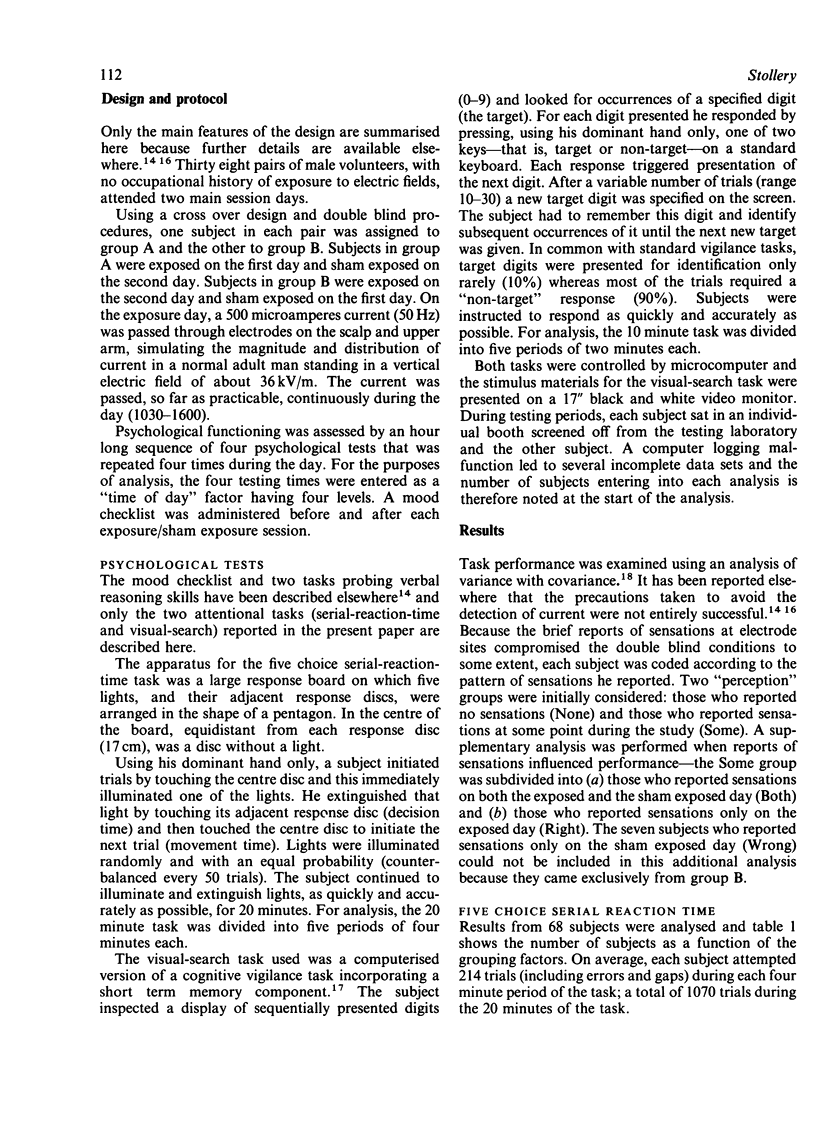

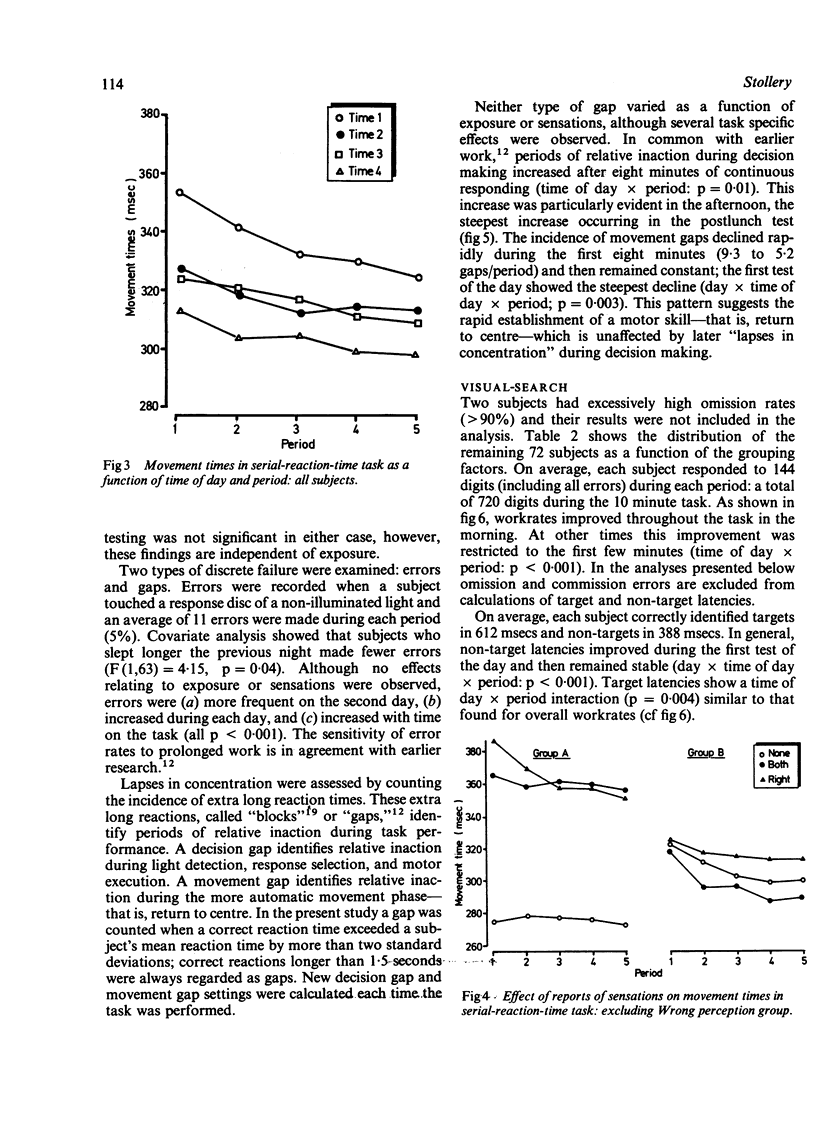
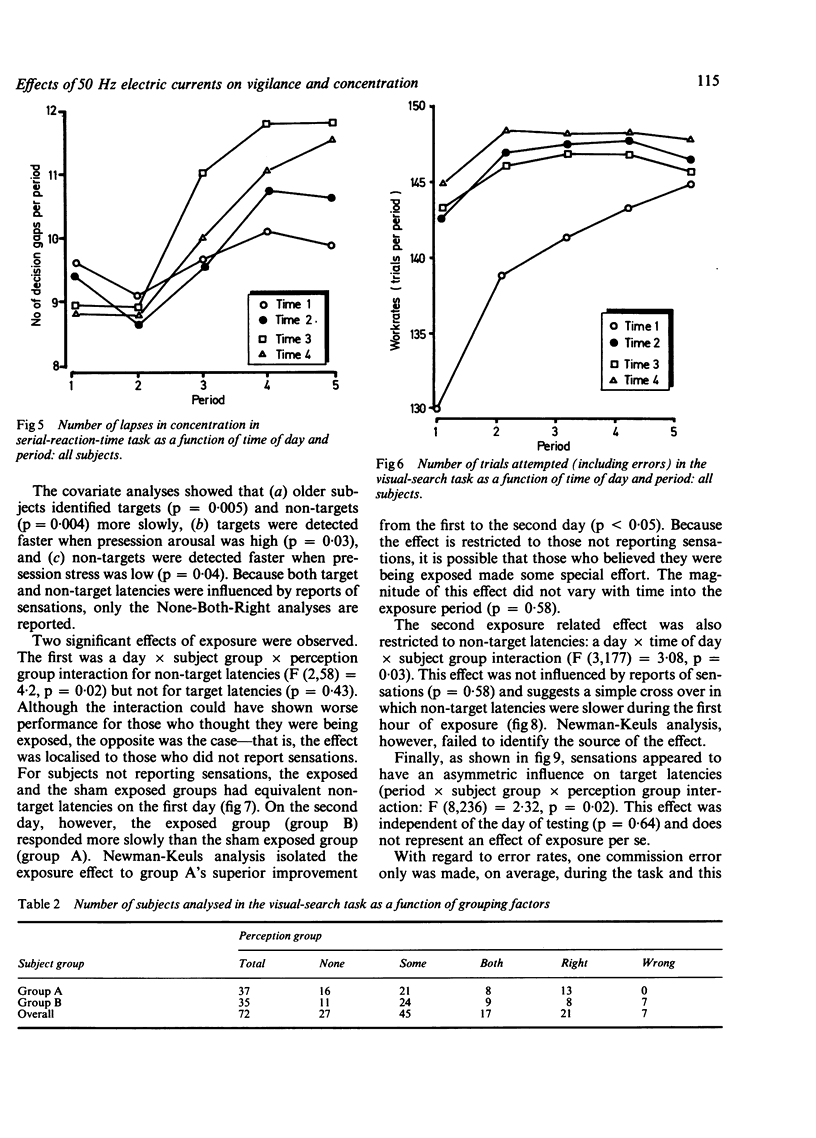

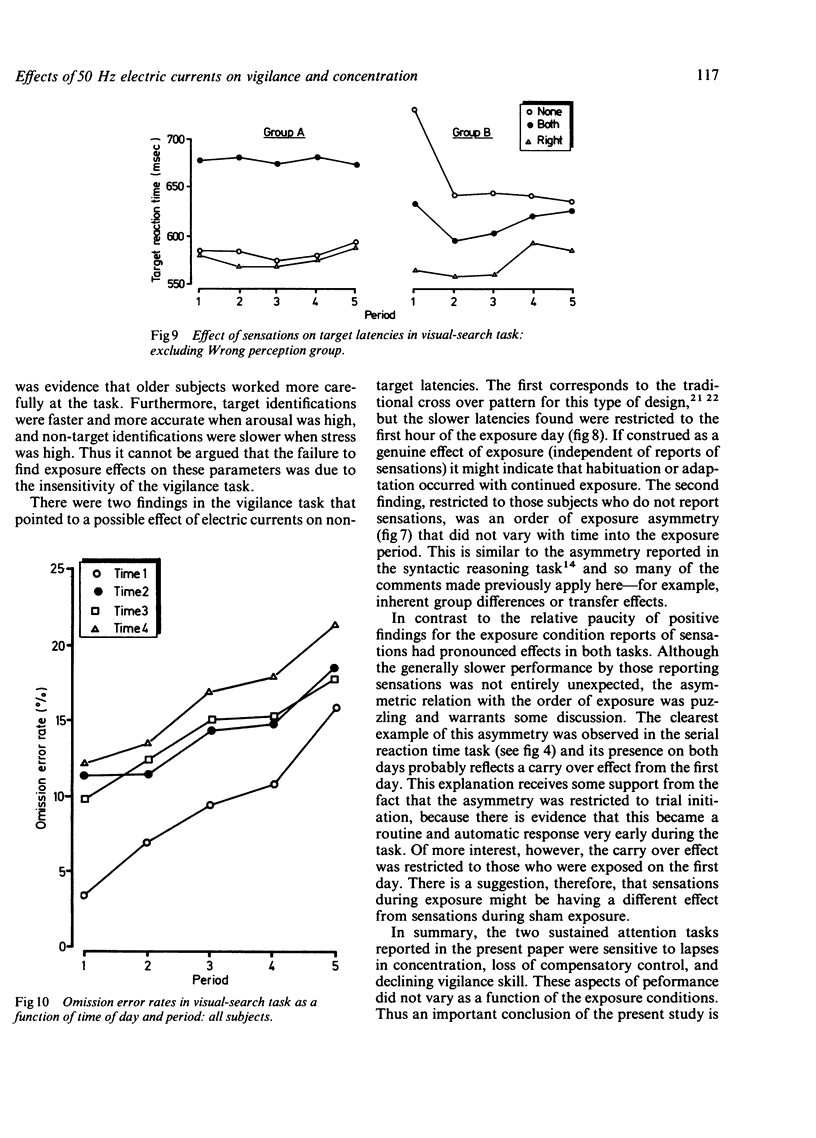
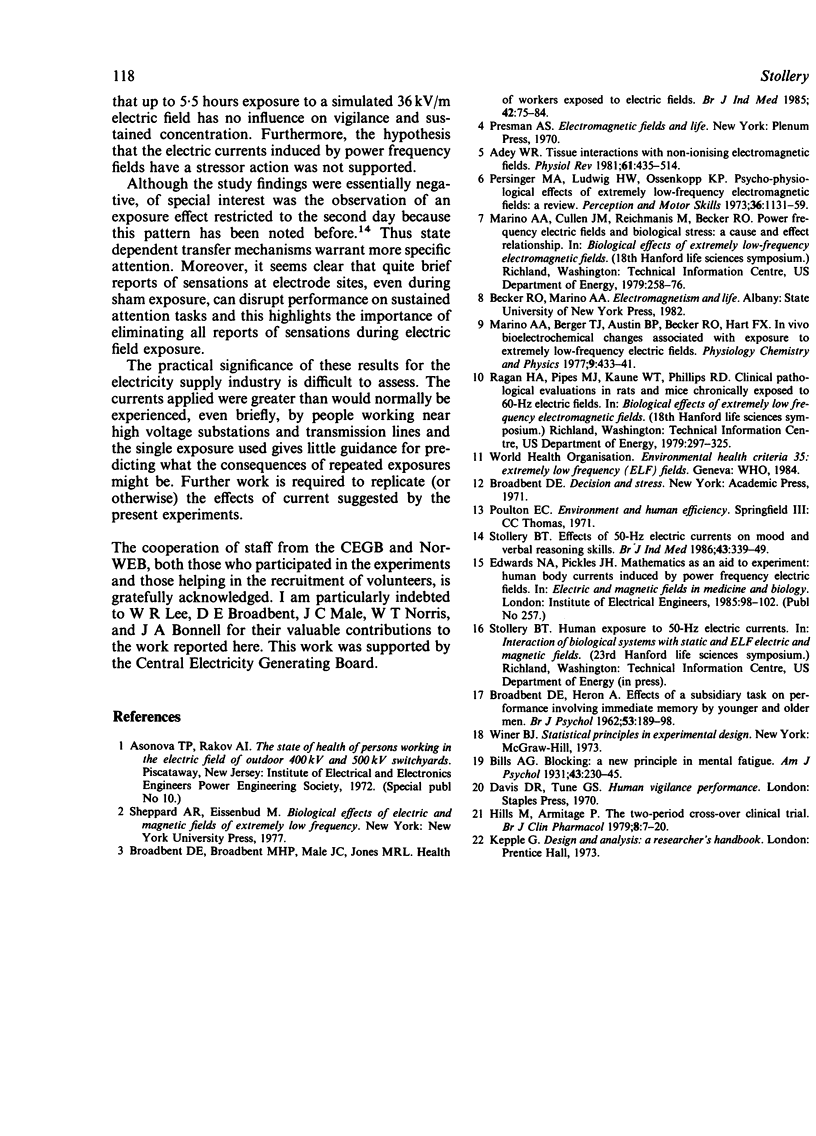
Selected References
These references are in PubMed. This may not be the complete list of references from this article.
- Adey W. R. Tissue interactions with nonionizing electromagnetic fields. Physiol Rev. 1981 Apr;61(2):435–514. doi: 10.1152/physrev.1981.61.2.435. [DOI] [PubMed] [Google Scholar]
- BROADBENT D. E., HERON A. Effects of a subsidiary task on performance involving immediate memory by younger and older men. Br J Psychol. 1962 May;53:189–198. doi: 10.1111/j.2044-8295.1962.tb00825.x. [DOI] [PubMed] [Google Scholar]
- Broadbent D. E., Broadbent M. H., Male J. C., Jones M. R. Health of workers exposed to electric fields. Br J Ind Med. 1985 Feb;42(2):75–84. doi: 10.1136/oem.42.2.75. [DOI] [PMC free article] [PubMed] [Google Scholar]
- Hills M., Armitage P. The two-period cross-over clinical trial. Br J Clin Pharmacol. 1979 Jul;8(1):7–20. doi: 10.1111/j.1365-2125.1979.tb05903.x. [DOI] [PMC free article] [PubMed] [Google Scholar]
- Marino A. A., Berger T. J., Austin B. P., Becker R. O., Hart F. X. In vivo bioelectrochemical changes associated with exposure to extremely low frequency electric fields. Physiol Chem Phys. 1977;9(4-5):433–441. [PubMed] [Google Scholar]
- Stollery B. T. Effects of 50 Hz electric currents on mood and verbal reasoning skills. Br J Ind Med. 1986 May;43(5):339–349. doi: 10.1136/oem.43.5.339. [DOI] [PMC free article] [PubMed] [Google Scholar]


